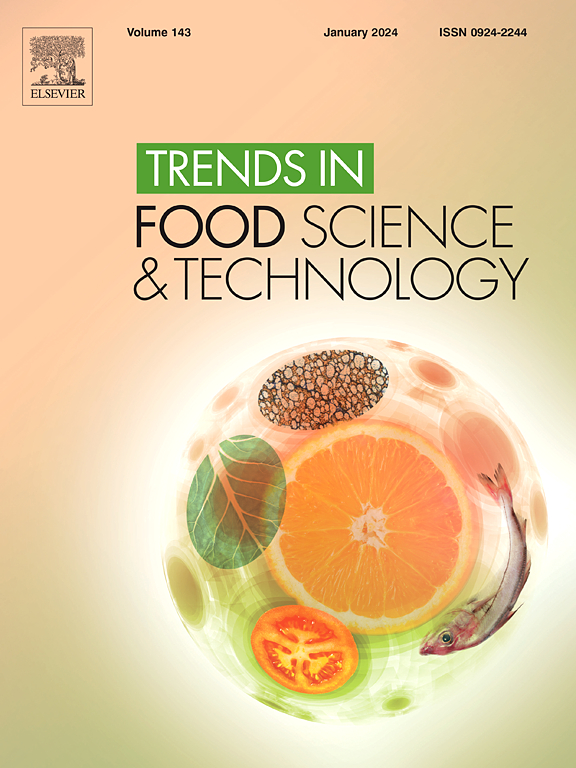Cracking Spirulina flavor: Compounds, sensory evaluations, and solutions
IF 15.1
1区 农林科学
Q1 FOOD SCIENCE & TECHNOLOGY
引用次数: 0
Abstract
Background
Cyanobacterium such as Spirulina (Limnospira) afford a high protein alternative when incorporated into food products over natural resources through sustainable aqueous cultivation. While Spirulina offers improvements in texture, nutritional quality, and biological effects, its flavor is a critical challenge that directly affects consumer acceptance.
Scope and approach
Thus, this work aimed to review the scientific literature regarding the volatile compounds and amino acids responsible for Spirulina flavor, taste, and odor and to discuss forthcoming methodologies such as enzymatic or acid hydrolysis, fermentation, microencapsulation and blending with essential oils for modifying its taste profile, for instance, based on experimental design. Additionally, the study reviews current Spirulina-enriched foods to understand consumer perceptions and identify opportunities for advancing innovative products that achieve higher consumer acceptance and buying intention.
Key findings and conclusions
Different technologies for modifying the characteristic Spirulina flavor have shown promising results by reducing compounds responsible for unpleasant odors and generating bioaromas and umami compounds. However, more studies are needed on applying treated Spirulina in food matrices for consumer sensory evaluation. Bakery products and pasta stood out in terms of acceptability when added to Spirulina. At the same time, sensory studies of foods need to adopt standardized protocols, recruit a larger number of participants in acceptance studies, and eliminate biases by ensuring that the researchers responsible for the study do not participate in the sensory evaluations. Furthermore, one aspect requiring investigation is whether health claims on Spirulina food labels can positively influence consumer perception despite its characteristic flavor.
求助全文
约1分钟内获得全文
求助全文
来源期刊

Trends in Food Science & Technology
工程技术-食品科技
CiteScore
32.50
自引率
2.60%
发文量
322
审稿时长
37 days
期刊介绍:
Trends in Food Science & Technology is a prestigious international journal that specializes in peer-reviewed articles covering the latest advancements in technology, food science, and human nutrition. It serves as a bridge between specialized primary journals and general trade magazines, providing readable and scientifically rigorous reviews and commentaries on current research developments and their potential applications in the food industry.
Unlike traditional journals, Trends in Food Science & Technology does not publish original research papers. Instead, it focuses on critical and comprehensive reviews to offer valuable insights for professionals in the field. By bringing together cutting-edge research and industry applications, this journal plays a vital role in disseminating knowledge and facilitating advancements in the food science and technology sector.
 求助内容:
求助内容: 应助结果提醒方式:
应助结果提醒方式:


